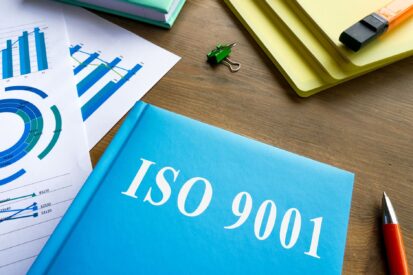ISO 9001 is an international standard that outlines the requirements for a quality management system (QMS). It is designed to help businesses consistently meet their customers’ and stakeholders’ needs and expectations. Achieving ISO 9001 certification is a significant achievement, but the work doesn’t stop there. Once you have obtained certification, it’s vital to maintain your ISO 9001 system to ensure that it continues to be effective and relevant.
Understanding the Requirements of ISO 9001
Maintaining an ISO 9001 system starts with thoroughly understanding the standard’s requirements. This includes understanding the clauses and sub-clauses of the standard, as well as any relevant guidance documents. It’s essential to keep up to date with any changes to the standard and ensure that your QMS complies with the latest version.
To ensure that your QMS is compliant, you must clearly understand the standard’s requirements. You should also ensure all employees know the requirements and understand their role in maintaining the QMS.
Conducting Internal Audits
Internal audits are a crucial part of maintaining an ISO 9001 system. These audits should be conducted regularly to ensure the QMS operates effectively and efficiently. Internal audits can also help identify areas for improvement, allowing you to enhance your QMS continually. Ensuring that auditors are trained, competent, and impartial is important.
Internal audits should be conducted by individuals independent of the area being audited. This helps to ensure that the audit is objective and impartial. When performing internal audits, focusing on areas critical to the QMS and identifying improvement opportunities is essential.
Continual Improvement
Continual improvement is a fundamental principle of ISO 9001. It involves identifying opportunities for improvement and taking action to implement changes that will enhance the QMS. Continual improvement can be achieved through a range of methods, including process reviews, customer feedback, and benchmarking against industry best practices.
To achieve continual improvement, it’s essential to establish a culture of continuous improvement within the organisation. This involves encouraging employees to identify opportunities for improvement and providing them with the necessary resources to implement changes.
Employee Training and Development
Employee training and development are essential for maintaining an ISO 9001 system. Employees should be trained on the requirements of the QMS, as well as any relevant policies and procedures. This will ensure that everyone in the organisation understands their role in maintaining the QMS and can contribute to continual improvement.
Employee training and development should be an ongoing process, with regular training sessions and opportunities for employees to develop new skills and knowledge. This will help ensure that employees are equipped to meet the requirements of the QMS and can contribute to the organisation’s success.
Document Control
Document control is a critical aspect of maintaining an ISO 9001 system. It involves ensuring that all documents and records related to the QMS are controlled, up-to-date, and accessible to those who need them. Document control also ensures that any document changes are reviewed, approved, and communicated appropriately.
To ensure effective document control, it’s essential to establish a document control procedure that outlines how documents are created, reviewed, approved, and updated. This procedure should also outline how documents are stored, retrieved, and disposed of.
Managing Non-Conformities
Non-conformities are instances where the QMS is not meeting the requirements of ISO 9001. It’s vital to manage non-conformities effectively to ensure they are resolved promptly and that the QMS remains compliant. This involves identifying the root cause of the non-conformity, taking corrective action, and implementing measures to prevent recurrence.
When managing non-conformities, it’s essential to establish a non-conformance procedure that outlines how non-conformities are identified, documented, and resolved. The procedure should also outline how non-conformities are reviewed and monitored to ensure they do not recur.
Final Thoughts
Maintaining an ISO 9001 system is an ongoing process that requires dedication, effort, and attention to detail. By understanding the standard’s requirements, conducting regular internal audits, focusing on continual improvement, providing employee training and development, implementing effective document control, and managing non-conformities, you can ensure that your QMS remains effective and relevant.
Maintain your ISO 9001 system with the help of ISO 9001 Consultants. We are an ISO 9001 consultancy in Sydney that specialises in the development and implementation of management systems aligned with international standards in Australia. We collaborate with organisations to develop value-added systems which standardise their business processes and everyday operations. Get in touch with us today!








Users Comments
Get a
Quote